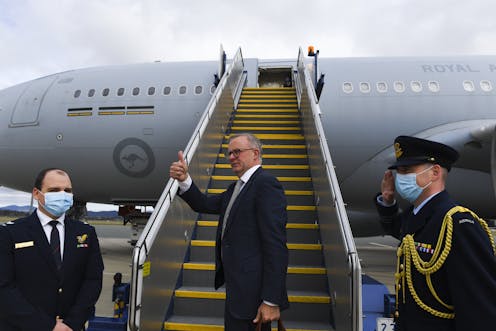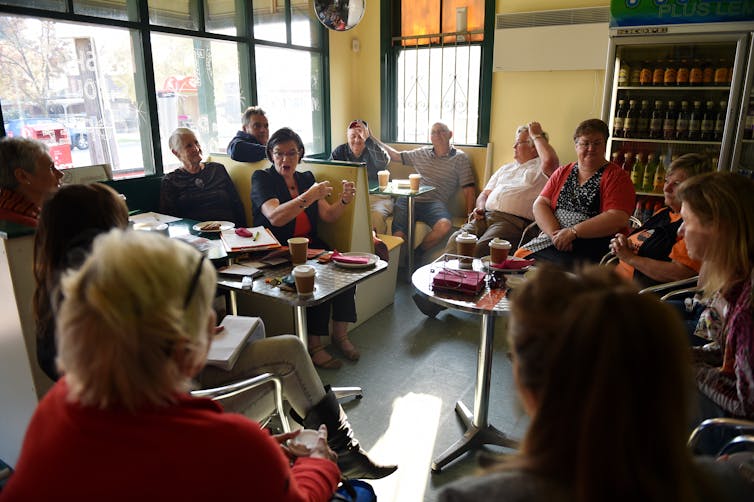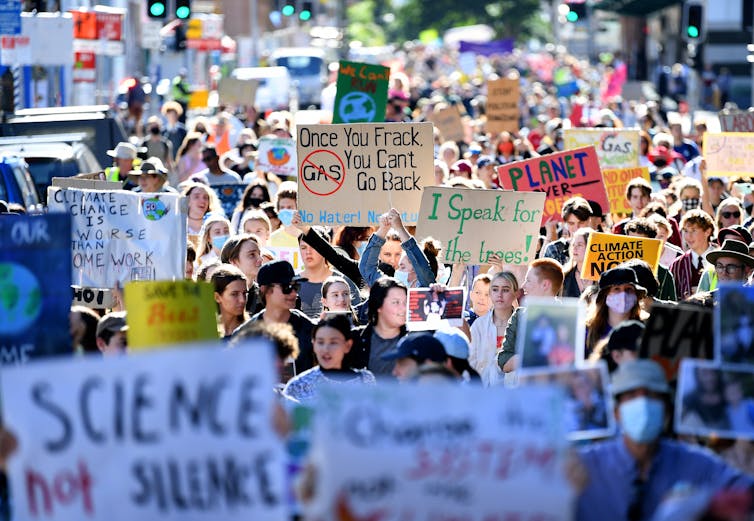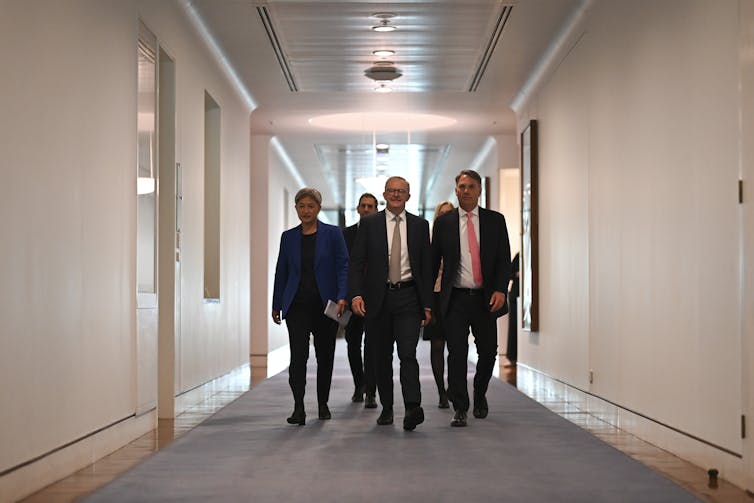
Prime Minister Anthony Albanese has pledged to “change the way” we do politics in Australia by avoiding soundbites and “actually answering questions”. This is part of his plan for “rebuilding respect” for politics itself.
Even before the uninspiring, adversarialelection campaign, we knew Australians had little affection for politicians and politics. Levels of distrust in government “soared” in 2021, according to pollster Roy Morgan.
But this does not mean Australians are disengaged. The record number of new independent MPs, coupled with the large numbers of volunteers who helped those campaigns, are serious indicators people will get involved if they feel like they can make a difference.
Now with a new government there is a rare opportunity to re-engage citizens in policy-making and politics. I research how people participate in politics. Below are four innovative democratic processes Albanese’s government could adopt to actually change the way we do politics – not just talk about it.
But first, why do we need to change?
Albanese is right when he says we need a change. This is because the more citizens distrust politicians and switch-off, the harder it is to hold a government to account.
At the same time, as the OECD points out in its public governance program, when citizens are more engaged in politics and involved in decision-making, the more likely it is that good policies will result that can address critical, difficult issues. Citizens will be more invested in the outcome when they see their views are heard and acted upon.

This is not a call for governments to do better so citizens will just trust them to act in their best interests. It is a call for governments to trust citizens more – and use their expertise more. Other governments around the world, such as Germany, Denmark and Canada, trust their citizens to be actively involved in policy-making - it is about time Australia learnt to do this too.
There is also a long list of critical issues that are not being solved by “politics as usual”. These issues affect all Australians and were largely ignored during the election campaign.
Albanese committed to new policy direction for the first two issues in his election night speech, while the second set were raised as key issues by voters:
- The Uluru Statement from the Heart and First Nations Voice to Parliament
- Effective, adequate climate change solutions
- Intergenerational equity, including cost-of-living, affordable housing and secure work
- A caring economy, that properly considers our health, aged care, child care and disability care needs.
What are the solutions?
Here are four innovative, citizen-centric ways the new government can start working on today to change politics in Australia.
1. Online petitions
My research has found that for most of us, political participation starts online. Signing an online petition or making a donation to an online crowd-sourced campaign are the most popular acts of participation in Australia.
Read more: Changing the world one online petition at a time: how social activism went mainstream
Yet, my research has also found the issues that matter to digitally active citizens rarely match the policy agenda of governments.
Petitions are one way to gather public opinion and make governments more responsive to citizen concerns. For example, the Scottish parliament’s petition process is easy to use, covers many issues, and ensures a government response. This is regarded by scholars as the international gold standard.
At the moment, Australia’s use of online petitions is tokenistic. It is hard to create, sign and share petitions via the House of Representatives website. There are also no substantive government feedback mechanisms built into the process.
2. Town hall meetings
Governments are regularly criticised for not consulting, or consulting minimally on decisions that they have already made. There are much better ways to bring together decision-makers and citizens.
One way to do this is via “town hall” meetings, where a topic or policy question is set, and politicians and citizens engage in an open dialogue. It starts with a commitment from politicans to hear the diverse views and experiences of citizens, learn from them and be clear about how their views will be used.
The “voices for” campaigns, begun by Cathy McGowan in Indi in the lead-up to the 2013 federal election (since taken up by the teals) is a good example of this. Many of these campaigns began with local “kitchen table” discussions. This mobilised local voters to campaign for a local independent and become involved in the change they wanted for their electorate. In part, this was because they could see how that change could happen.

Beyond election campaigns, it is possible to set up new ways to connect the government with citizens. A large-scale project called Connecting to Congress has been run by Ohio State University academics since 2006. It has facilitated 25 live-streamed online town halls between US Congress members and a representative cross-section of their constituents. Borrowing on this experience, the University of Canberra ran two “Connecting to Parliament” experiments in Australia in 2020 and 2021. This saw two online town halls with federal MPs on issues of mitochondrial donation and youth participation.
3. Citizens’ assemblies
Over the past decade, Ireland has used citizen assemblies on issues ranging from marriage equality to abortion, the ageing population, climate change, biodiversity loss, gender equality, referendums and fixed term parliaments.

They generally see 100 randomly selected people spend time together learning about and discussing issues, and then voting on options for policy change or constitutional reforms. As a result of these deliberations, there have been successful referendums in Ireland on marriage equality in 2015, and legalising abortion access in 2017.
However, one of the main proponents of Irish citizen assemblies, political scientist David Farrell, suggests there is now a need for new innovations, learning from Belgium and France. In those countries, the agenda is less tightly controlled by governments and more driven by what citizens want to focus on.
In Australia, a similar process called a “Citizens’ Jury”, has been used by local and state governments to develop policy. For example, the City of Sydney used a Citizens’ Jury of 40 randomly selected citizens to help develop Sydney’s plan for 2050. The jury discussed thousands of submissions from residents to recommend eight core concepts for change on issues such as First Nations leadership, accessible housing, and a 24-hour city economy.
4. Advocacy and transparency
This fourth democratic “innovation” is about making better use of the advocacy sector in Australia.
Over the past 20 years, we have seen increasing constraints on how registered charities or organisations that provide services can also engage in advocacy. This includes diverse groups ranging from Australian Council of Social Service, the Australian Conservation Foundation, Vinnies and Amnesty International.
Ensuring broad representation of diverse social groups is a fundamental part of good governance and integrity. We need to reform the Australian Charities and Not-for-profits Commission to ensure advocacy is no longer politicised, but encouraged and seen as a useful public good.
At the same time, we need a more transparent lobbying system. This includes limits on political donations and public diaries of meetings politicians have with lobbyists, as happens in Canada. The more information we have about who is lobbying whom, the less influence those with the most money are likely to have.
Then governments needs to listen and respond
All these approaches need to include diverse voices and perspectives – not just the people we already hear from in new ways.
Part of the problem with most existing forms of citizen participation is they entrench existing political inequalities. They are skewed towards the most vocal, most educated, and those with the most spare time. It is essential that new participatory initiatives for citizens systematically recruit diverse involvement.

They must also have what researchers call a “a theory of change”. This is a clear description of why this method will work and what will happen in the short, medium and longer terms. As political scientist David Farrell warns, we need to make sure these experiments do not just result in lengthy reports that nobody reads.
If Albanese is serious about changing the way politics happens here, he needs to lead a government committed to responding to what Australians say.
Ariadne Vromen receives funding from the Australian Research Council for research on gender equity and the future of work.
This article was originally published on The Conversation. Read the original article.







